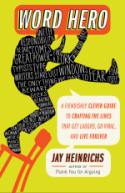Freaks and Stoners, Jesus and Meth
 Friday, November 12, 2010 at 09:55AM
Friday, November 12, 2010 at 09:55AM Figaro’s daughter, Dorothy Junior, sent us this link to a world stereotype map. The stereotype is a great rhetorical concept, in part because of its etymological link to that rhetorically useful device, the cliché.
 Cliché is a French onomatopoeia meaning “click,” the sound an old-fashioned typesetter made when he tapped melted lead against a cast. The end product was a reusable block of type called a stereotype.
Cliché is a French onomatopoeia meaning “click,” the sound an old-fashioned typesetter made when he tapped melted lead against a cast. The end product was a reusable block of type called a stereotype.
Both cliché and stereotype have morphed into low-class metaphors, but they bear a deep neurological significance. Basically, people think in terms of stereotypes and clichés—prefab chunks of information and attitudes that combine to form perceptions and understanding.
In high school print shop Figaro learned to collect letters into common words and expressions that he could throw into his stick on the fly. Our brains do this, too. Cognitively speaking, a cow is a set of stereotypes: animal, livestock, thing that lives on a farm, milk producer, hamburger on the hoof. The problem with stereotyping only arises when we feed the wrong type into our mental sticks, or when we misread the type we have. Mark Twain understood the problem with using the wrong type mentally. “A cat that sits on a hot stove won’t sit on a hot stove again,” he said. “But it won’t sit on a cold stove, either.”
Figaro doesn’t stove. He microwaves.


Reader Comments (6)